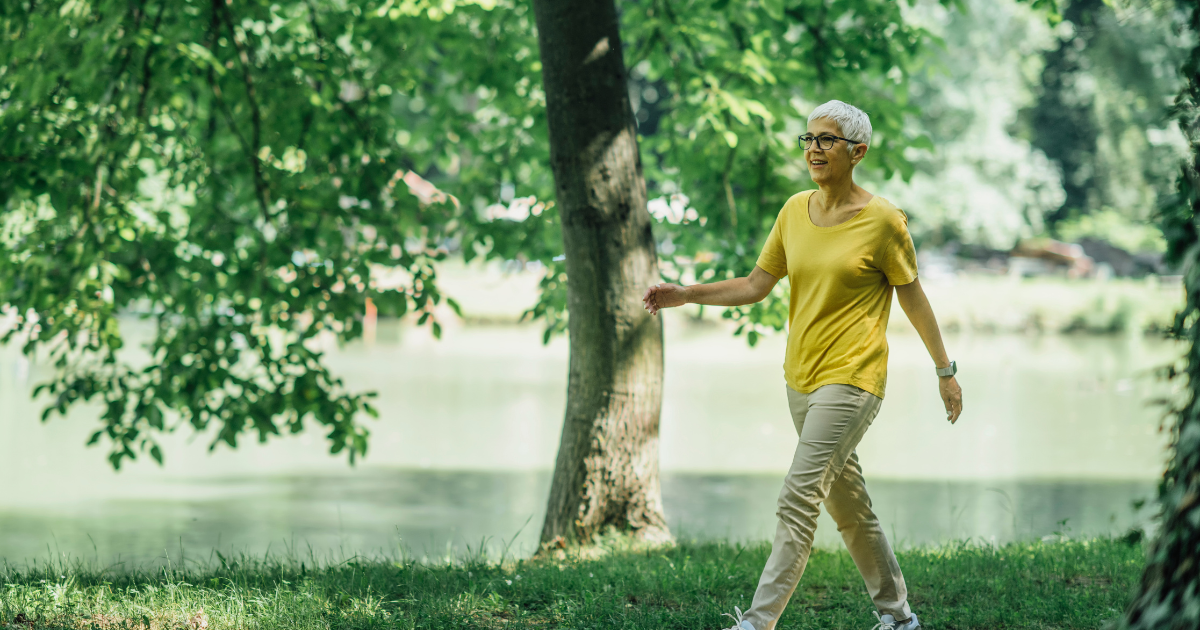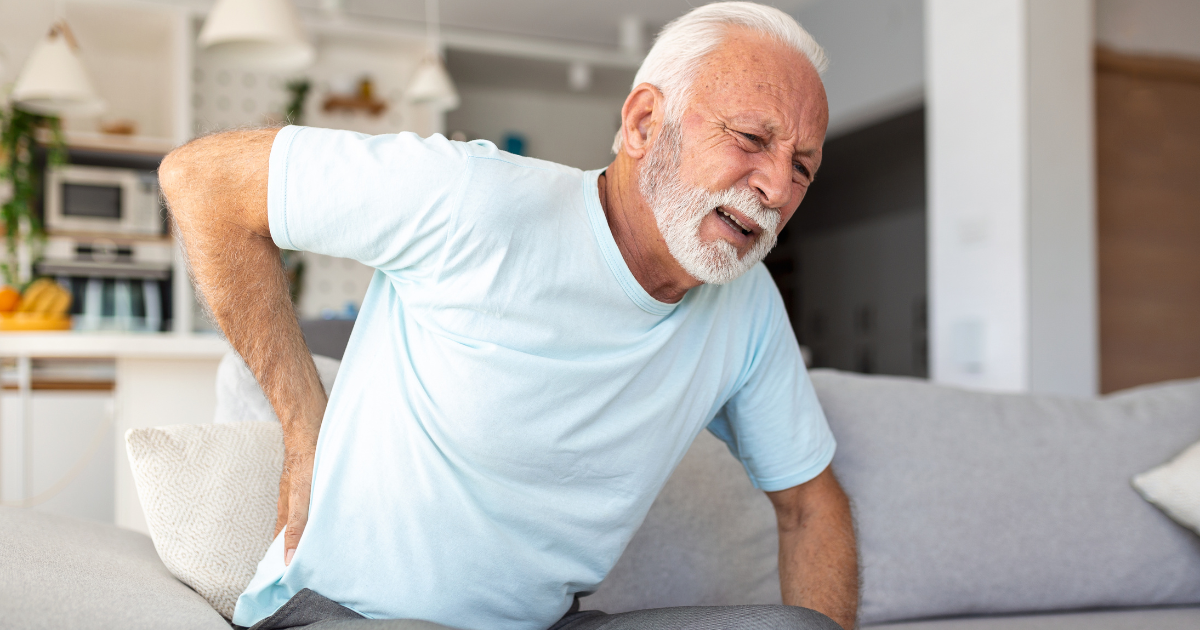Is Walking Good for Sciatica? What to Know
Key Takeaways
- Start Slow and Steady: Begin with short walks and gradually increase duration while maintaining good posture and avoiding overexertion.
- LUMINAS Patches for Relief: LUMINAS Sciatica Pain Relief Patches provide targeted, drug-free, long-lasting pain relief, making them an excellent addition to your daily routine.
- Alternatives to Walking: Other effective low-impact exercises can help improve flexibility and reduce pressure on the sciatic nerve.
- Consistency is Key: Incorporate a mix of exercises and gradually increase activity as your body allows, consulting a healthcare provider or physical therapist when necessary to ensure safety.

Living with sciatica can make even the simplest tasks—like walking or sitting—unbearable. The sharp, shooting pain from your lower back down your leg can leave you wondering if there’s any relief in sight. But did you know that movement, including walking, when done correctly, could actually reduce pain? In this blog, we’ll explain how walking can help, how to do it safely, and how LUMINAS Sciatica Pain Relief Patches can provide immediate relief.
Understanding Sciatica: The Nerve Behind the Pain
Sciatica is not just any kind of back pain. It’s a specific condition that affects the sciatic nerve, the largest nerve in the human body. This nerve starts in the lower spine, runs through the buttocks, and extends down the back of each leg, ending just below the knee. When this nerve is compressed or irritated, it can cause a variety of painful symptoms, affecting your ability to move comfortably.
Common Causes of Sciatica
Sciatica often develops as a result of conditions that put pressure on or damage the sciatic nerve. Here are some of the main causes:
- Herniated Discs: The most common cause of sciatica is a herniated disc in the spine. Discs are cushion-like structures that sit between the bones (vertebrae) in your spine. When one of these discs becomes damaged, it can bulge or rupture, putting pressure on the nerve and causing pain. This can lead to inflammation, numbness, and discomfort, especially in the lower back and legs.
- Bone Spurs: Sometimes, as a person ages, bone spurs (extra bone growths) can form on the spine. These bony growths can press on the nerve and lead to sciatica symptoms. This condition is often linked with arthritis.
- Spinal Stenosis: Spinal stenosis refers to the narrowing of the spaces in your spine, which can lead to pressure on the nerve. This condition is more common in older adults and is another cause of chronic low back pain.
- Trauma or Injury: Accidents or trauma, such as car crashes or falls, can damage the spine or surrounding tissues, leading to sciatic nerve pain.
- Piriformis Syndrome: This condition involves the piriformis muscle, located deep in the buttocks. If this muscle becomes tight or spasms, it can irritate the nerve and cause sciatica-like symptoms.
- Pregnancy: During pregnancy, the growing uterus can put pressure on the nerve, causing discomfort for some women.
Symptoms of Sciatica
Sciatica symptoms can vary from person to person and depend on how much pressure is being applied to the sciatic nerve. Here are some of the most common signs:
- Sharp, shooting pain down one leg
- Numbness or tingling
- Weakness in the leg
- Pain that worsens with movement

Will Walking Help My Sciatica?
If you are wondering, is walking good for sciatica? The short answer is yes! A systematic review using meta-analysis data showed leisure-time physical activity, including walking, may have a moderate protective effect against the development of lumbar radicular and sciatica nerve pain.
It’s important to do it right to avoid making your condition worse, so let’s break down how walking helps and provide practical tips to get started safely.
How Walking Helps Relieve Sciatica
- Boosts Circulation: Walking increases blood flow to your lower back and legs, which can help reduce inflammation and muscle spasms—common causes of sciatic symptoms.
- Spinal Decompression: Walking with good posture helps gently decompress the spine, easing the pressure on your sciatic nerve. This is especially useful for conditions like herniated discs.
- Strengthens Core Muscles: Walking engages your core muscles, which support your spine and help prevent future flare-ups.
- Releases Endorphins: Walking releases your body’s natural painkillers—endorphins—which can help you manage chronic low back pain more easily.
Preventing Additional Pain
- Avoid Uneven Surfaces: Stick to flat terrain to reduce stress on your lower back.
- Monitor Pain Levels: If your pain becomes unmanageable, stop walking and rest. Persistent pain requires consultation with your doctor or physical therapist.
- Rest During Flare-Ups: Avoid walking during intense sciatica flare-ups to prevent worsening your symptoms and slowing recovery.
By following these tips and listening to your body, walking can be a safe and effective way to manage your sciatica.
The LUMINAS Advantage: Supercharge Your Sciatica Relief
LUMINAS Sciatica Pain Relief Patches offer targeted, drug-free pain relief that complements your active lifestyle, especially for those managing sciatica pain. Here’s how they stand out:
- Long-Lasting Relief: These patches provide consistent, targeted pain relief for up to 24 hours, ensuring you're covered throughout the day without needing frequent reapplication.
- Natural and Non-Invasive: Unlike pain medication, LUMINAS patches use innovative electroceutical technology to reduce pain and inflammation without side effects. This makes them a safe, effective option for daily use.
- Reduces Inflammation: By actively reducing swelling and inflammation, LUMINAS patches help relieve the underlying causes of sciatica pain, allowing you to move more comfortably.
- Enhances Mobility: Whether you’re walking, stretching, or doing other low-impact activities like yoga or swimming, LUMINAS patches help improve your mobility and reduce stiffness.
Walking Wisely: When It Helps and When It Hurts
While walking is great for most pain patients with sciatica, it’s essential to know your limits:
- Best for Mild to Moderate Pain: For those with mild to moderate symptoms, regular walking can strengthen your core, improve body composition, and help prevent future flare-ups.
- Severe Pain? Slow Down: If your pain is intense, avoid walking for long distances. Instead, try short walks at a slower pace and gradually increase as you improve.
- Support Your Steps: Proper shoes are a must! Footwear with good arch support can reduce pressure on your lower back, easing symptoms as you walk.
Proceed with Caution: Walking Tips for Sciatica Relief
To safely incorporate walking into your routine, follow these walking tips:
- Start with Short Walks: Begin with 5-10 minute sessions, then slowly increase duration as your pain level allows.
- Keep a Good Posture: Engage your core, keep your shoulders back, and maintain a slight lean forward to reduce strain on your spine.
- Use LUMINAS for Extra Relief: Apply the LUMINAS Sciatica Pain Relief Patch before walking for extra comfort.
- Cool Down with Stretches: Gentle stretches after your walk can help maintain flexibility and prevent stiffness, reducing the chance of further injury.
Exploring Other Treatments: Other Ways to Stay Active with Sciatica
Walking isn’t the only treatment option. If you’re looking for more ways to relieve sciatica pain, try these alternative methods:
1. Swimming
The buoyancy of water supports your body, reducing pressure on your lower back. Try swimming laps or water walking to improve mobility and strengthen your core muscles without straining your spine.
2. Cycling
Stationary or outdoor cycling is a great way to improve muscle strength and flexibility without aggravating sciatica. Start with low resistance and maintain proper posture to avoid putting pressure on your spine.
3. Yoga and Tai Chi
Both yoga and tai chi improve body balance and flexibility while reducing pressure on your nerves. Focus on poses like the child’s pose and pigeon pose, or try slow, controlled movements to improve overall flexibility.
4. Heat and Cold Therapy
Use heat therapy before exercise to loosen muscles and improve blood flow, and apply cold packs after activity to reduce swelling and inflammation.
5. Strength Training
By focusing on active or structured exercise programs, you can improve your overall stability and prevent the recurrence of sciatica. Exercises like bridges, planks, and leg lifts help strengthen the core muscles and stabilize your spine, reducing future sciatica flare-ups.
6. Massage Therapy
Massage can relieve muscle spasms and improve blood flow, easing pressure and reducing pain.
Gradually increase activity as your body allows, alternate between exercises like swimming, yoga, and cycling for a balanced routine, and always consult a physical therapist before starting any new exercises to ensure safety and effectiveness.

Keep Moving Forward: Walking, LUMINAS, and Your Sciatica Recovery
Walking is a simple, effective way to manage sciatica pain. When combined with LUMINAS Sciatica Pain Relief Patches, you can ease discomfort and stay active. Don’t let sciatica hold you back any longer. Start taking control of your pain today with these easy-to-follow tips and the all-natural power of LUMINAS Sciatica Pain Relief Patches.
You deserve to live pain-free—take the first step now!









